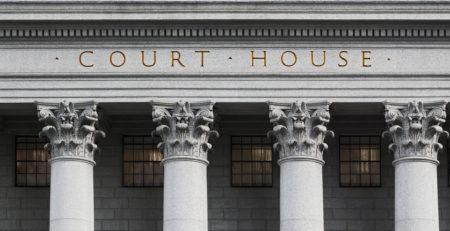Two Supreme Court Cases Walk Into a Bar…
Posting by Andrew Staab
Recently, the U.S. Supreme Court issued two decisions affecting employee benefit plans. Although neither case dealt with payroll auditing, or were otherwise “landmark” decisions, they are worthy of mention for employee benefit plan fiduciaries and service providers. The key to both cases is chronology, or, when to act to preserve your rights. Not all of the legal issues of each case will be discussed in this blog post, but rather the more salient points are covered.
The first case is Ray Haluch Gravel Co. v. Central Pension Fund of International Union of Operating Engineers and Participating Employees, 134 U.S. 773 (2014), and it deals with when a fringe benefit fund must file an appeal to an adverse trial court decision.
In this case, the Fund brought a collections lawsuit against the company, but it did not get the full amount it had requested. After the court’s decision to award the Fund some – but not all – of the Fund’s claim, the Fund brought a motion for a statutory award of attorney fees. After the motion for attorney fees, the Fund filed an appeal of the court’s award of less than 100% of the Fund’s claim for unpaid contributions.
The company argued that the Fund’s appeal was untimely under the Federal Rules of Civil Appellate Procedure, because more than thirty days had lapsed between the court’s initial ruling and the Fund’s appeal. The Fund argued the case was not final until the Court rules on the attorney fees request, and that the appeal was indeed timely. The U.S. Supreme Court disagreed with the Fund’s argument, and held that the appeal clock started running when the court ruled on the case’s merits. According to the U.S. Supreme Court, the request for statutory attorney fees does not prolong the appeals period.
The question is: When is the case final for purposes of timing an appeal? It’s not uncommon for victorious fringe benefit plans to bring a motion for attorney fees after the trial is complete. This case is odd, because the Fund was entitled to attorney fees for being “victorious,” but yet the Fund was appealing a disappointing court decision about the amount of delinquent contributions.
The bottom line for Fund collections professionals is to keep track of the appeals period without calculating a subsequent attorney fees motion. Just because it is an odd case, fringe benefit funds can use this argument when delinquent employers want to appeal a decision while there is a pending attorney fee motion. The clock has already been ticking.
The second U.S. Supreme Court case is Heimeshoff v. Hartford Life & Accident Ins., 134 S.Ct. 604 (2013), and the topic of timeliness is crucial. Statutes of limitations have been criticized for their harshness, but the prevailing opinion is that they serve a very important purpose: to avoid having things sit for years when they could have been brought sooner. Memories do not improve over time.
ERISA does not have a statute of limitations to bring a lawsuit for benefit claims, and courts have labeled benefits claim litigation as a breach of contract. Courts have also ruled that parties to contracts can agree to a shorter statute of limitations period than what the state law breach of contract statute of limitations prescribes. A plan document, or Summary Plan Description (SPD), is a contract between plan and plan participant, and it can state something shorter than the state law.
The plan in Heimeshoff had a limitations period that started on the date of proof of loss, specifically, a suit to recover benefits must commence within three years after “written proof of loss” is due. In 2005, the plan participant filed a claim with her employer’s disability insurer for long-term disability benefits. In 2007, the disability insurer issued its denial of the claim. In 2010, more than three years after she filed her claim but less than three years after the claim denial, she brought suit against the insurer.
Both the trial court and the Second Circuit of the U.S. Court of Appeals rejected the participant’s claim for disability benefits. The U.S. Supreme Court recognized there was inconsistency in the other federal appellate courts, and it took the case to remove any doubt. The U.S. Supreme Court affirmed all of the lower court decisions, and it expressly confirmed that parties to a contract can agree to a shorter statute of limitations period. The participant, meanwhile, is wondering why she had only one year after the initial denial to bring her claim.
The U.S. Department of Labor argued with the participant in this case, and it asserted that the plan provision with the shortened statute of limitations undermined ERISA’s remedial scheme of review of denied claims. One can easily understand that this rewards plans to use as much time as lawfully possible to decide a claim request.
The U.S. Supreme Court will likely hear more cases involving statutes of limitations and litigants losing the opportunity to proceed solely on the passage of time. For now, these two cases, which were decided only one month apart, shed more clarification (and yes, probably more confusion) on matters involving employee benefit plans.






